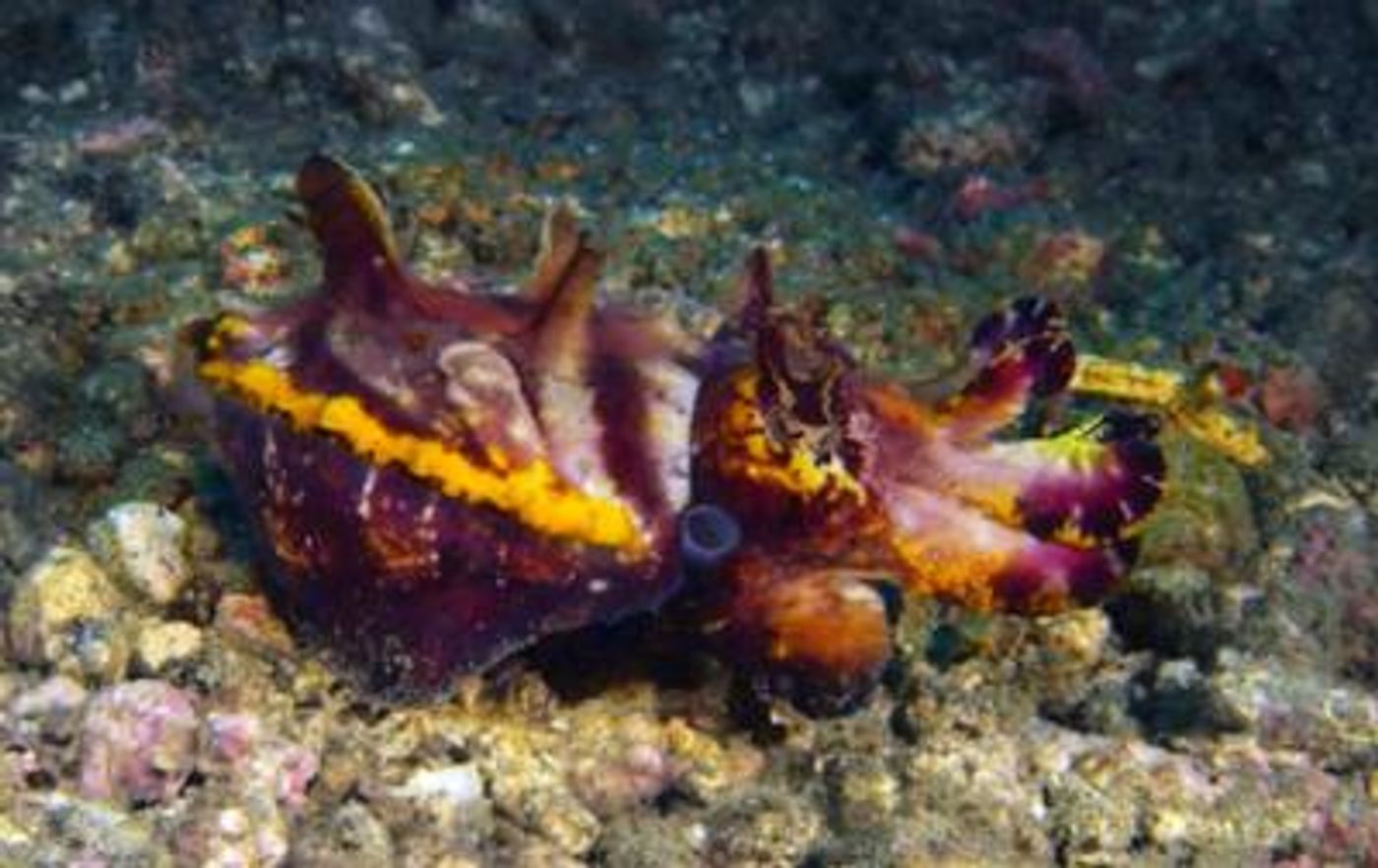Flamboyant Cuttlefish Are Usually Understated
Cuttlefish are well known for their incredible camouflaging abilities; they can rapidly change the color and texture of their skin at will. Researchers are learning more about when these amazing cephalopods employ those techniques.
"This animal is well known in the internet community, has been on TV many times, and is popular in public aquariums," said Roger Hanlon Ph.D., a senior scientist at the Marine Biological Laboratory, Woods Hole. "In almost all cases, [its skin] is showing this brilliantly colorful flamboyant display."
During Hanon’s fieldwork in Indonesia, however, he learned that such behavior of the cuttlefish is not typical. "It turns out in nature, flamboyant cuttlefish are camouflaged nearly all of the time. They are nearly impossible to find," he said.
While they can turn on dazzling displays in an instant, vibrant colors aren’t used that often; they’re employed during mating rituals, to scare off potential threats, or when males are battling for a female mate. A stranger that approaches the cuttlefish might get the impression that they’re exotic-looking all the time.
"The flamboyant display is common when a diver approaches close enough to photograph, which is why the public may think this species always looks so colorful," Hanlon explained. "But it is rare to see this species in flamboyant display in the wild."
The male flamboyant cuttlefish (Metasepia pfefferi) has many social behaviors. The MBL researchers used many hours of video to learn more about the reproductive rituals and patterns of these animals, from mating to spawning eggs.
Males are usually much smaller than females, and they will use flamboyant displays to court females, as well as rituals that include quickly waving their arms during a display, or darting forward to briefly touch their arm to a female's arm, like a quick cuttlefish kiss. Males will continue to court females at length - the study showed that the behavior might go on for six minutes to nearly an hour. Males can also compete for the same female, and might signal courtship to the female while flashing white to signal aggression at the other male.
Once the female opens three pairs of her arms (while standing on the fourth pair), the male knows she is receptive. The male can then deposit his spermatophores where the receptacle is located on the female, with mating lasting an average of just under three seconds.
The males seemed to only hang around to guard the female briefly after mating and don’t stay while she laid eggs unless another male was present. Females remain camouflaged while they spawn, pushing their eggs into the underside of a coconut shell. The hatchlings will be capable of camouflaging themselves once they are ready to leave their eggs.
Camouflage is the main defense strategy for these animals, so they stay camouflaged the majority of the time. When threatened, they can activate a flamboyant display in under 700 milliseconds.
Sources: AAAS/Eurekalert! via Marine Biological Laboratory, Journal of Experimental Marine Biology and Ecology









